The first time I saw a hammerhead shark while scuba diving was also the first time I saw 50 of them.
Clinging to a rock on a sloping reef about 20 metres down from the surface, I looked up to see one of these magnificent and weirdly beautiful creatures slowly gliding my way. My first instinct was to abandon the official plan of holding on to a sturdy part of reef, releasing myself into the strong currents – but I resisted.
Curiosity got the better of the shark, as he turned lazily to examine me – a neoprene-clad human with a metal hump and a plastic face with bubbles streaming past it. For a moment it was just the shark and I, floating in the Pacific Ocean, 20 metres down from the surface at Wolf Island in the Galapagos Islands, 1423km west of mainland Ecuador.
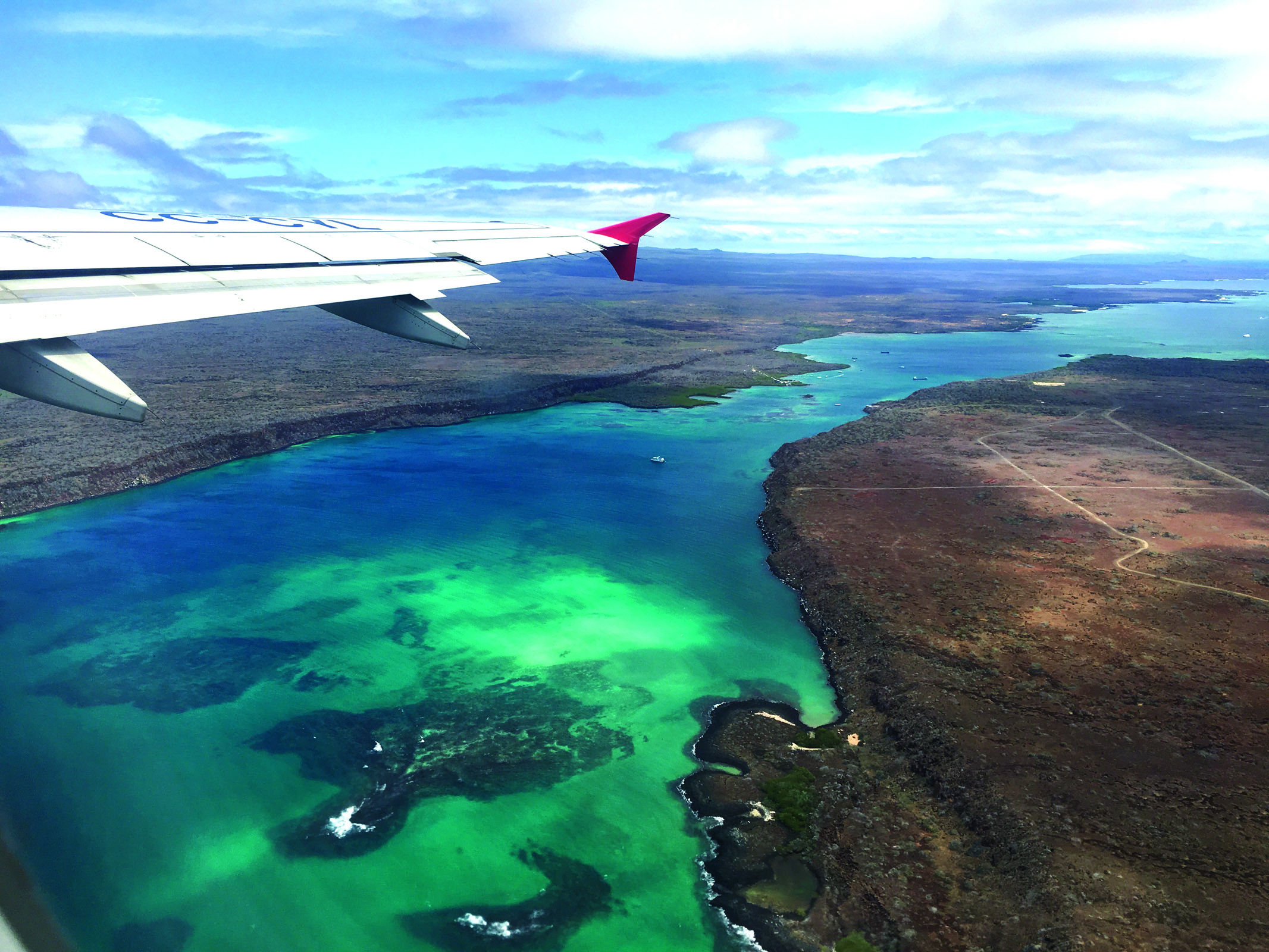


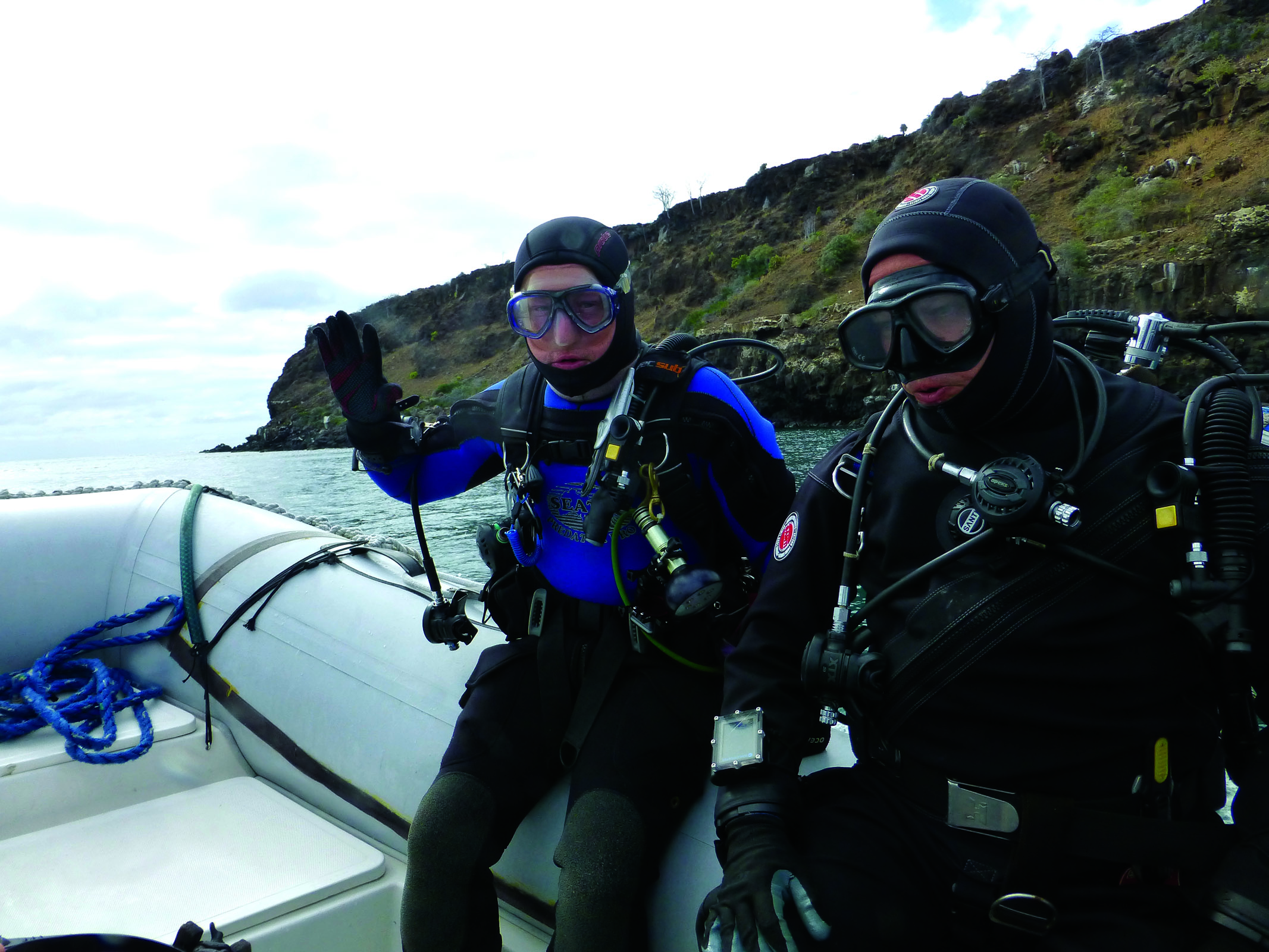
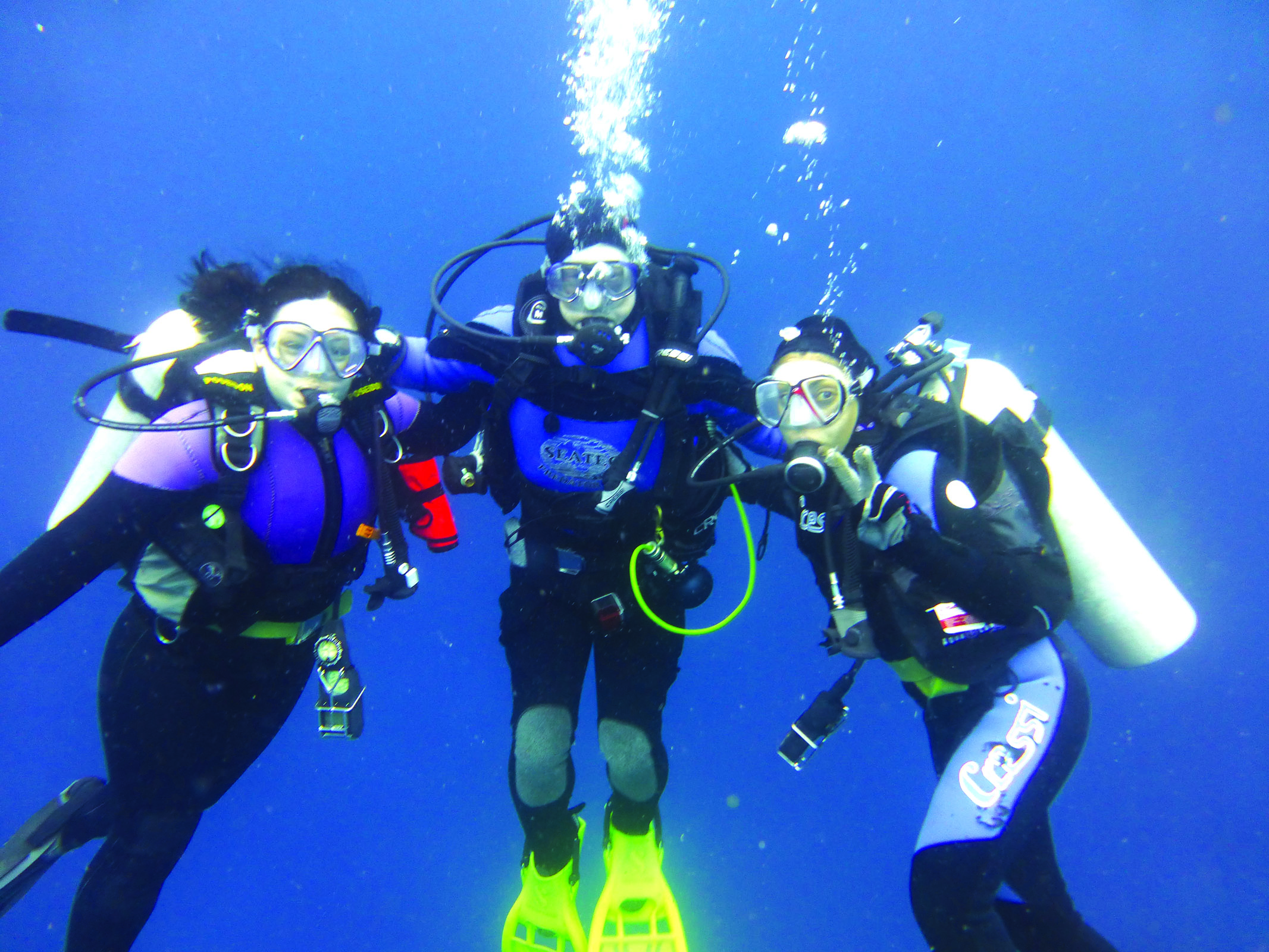
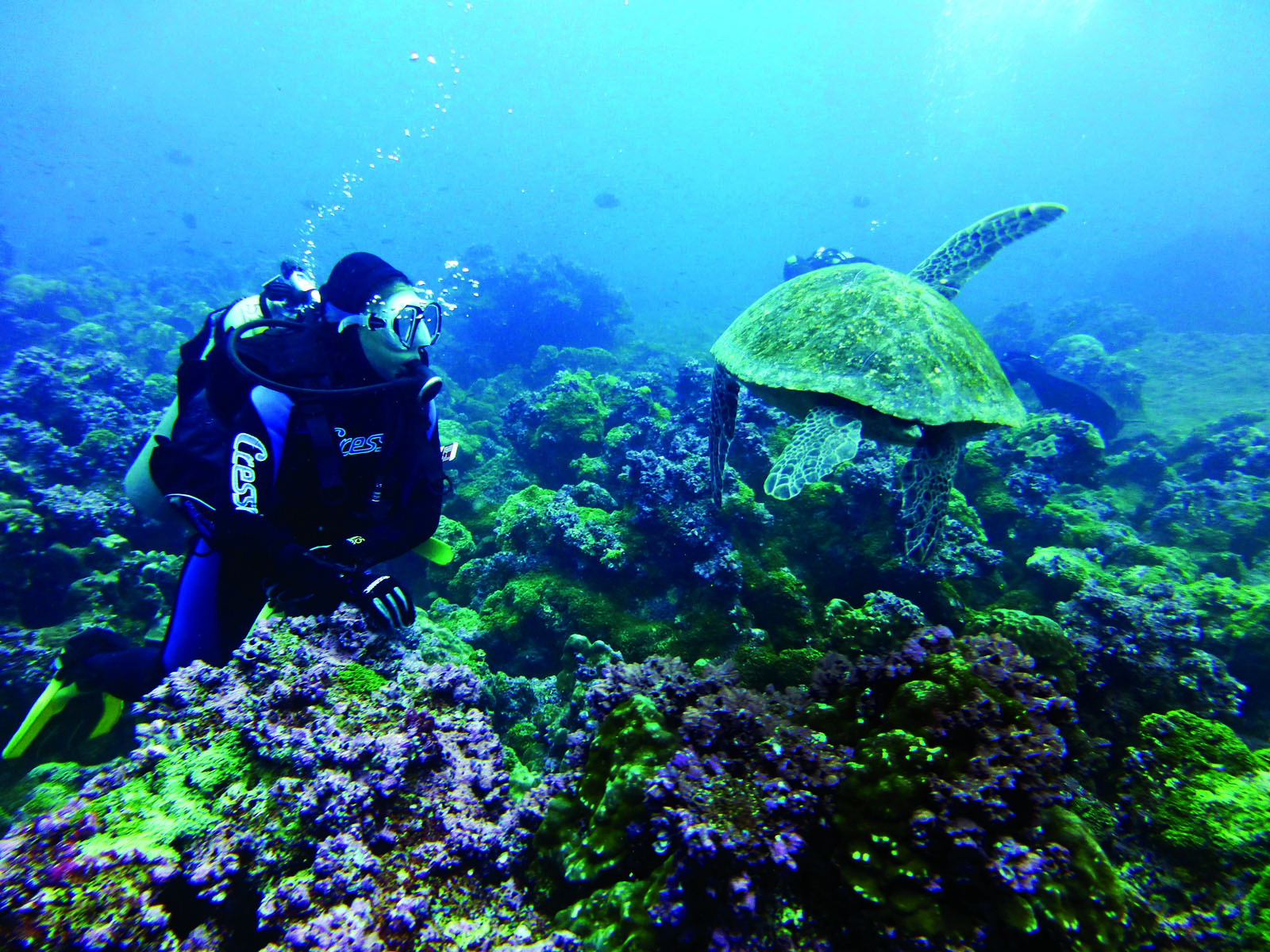
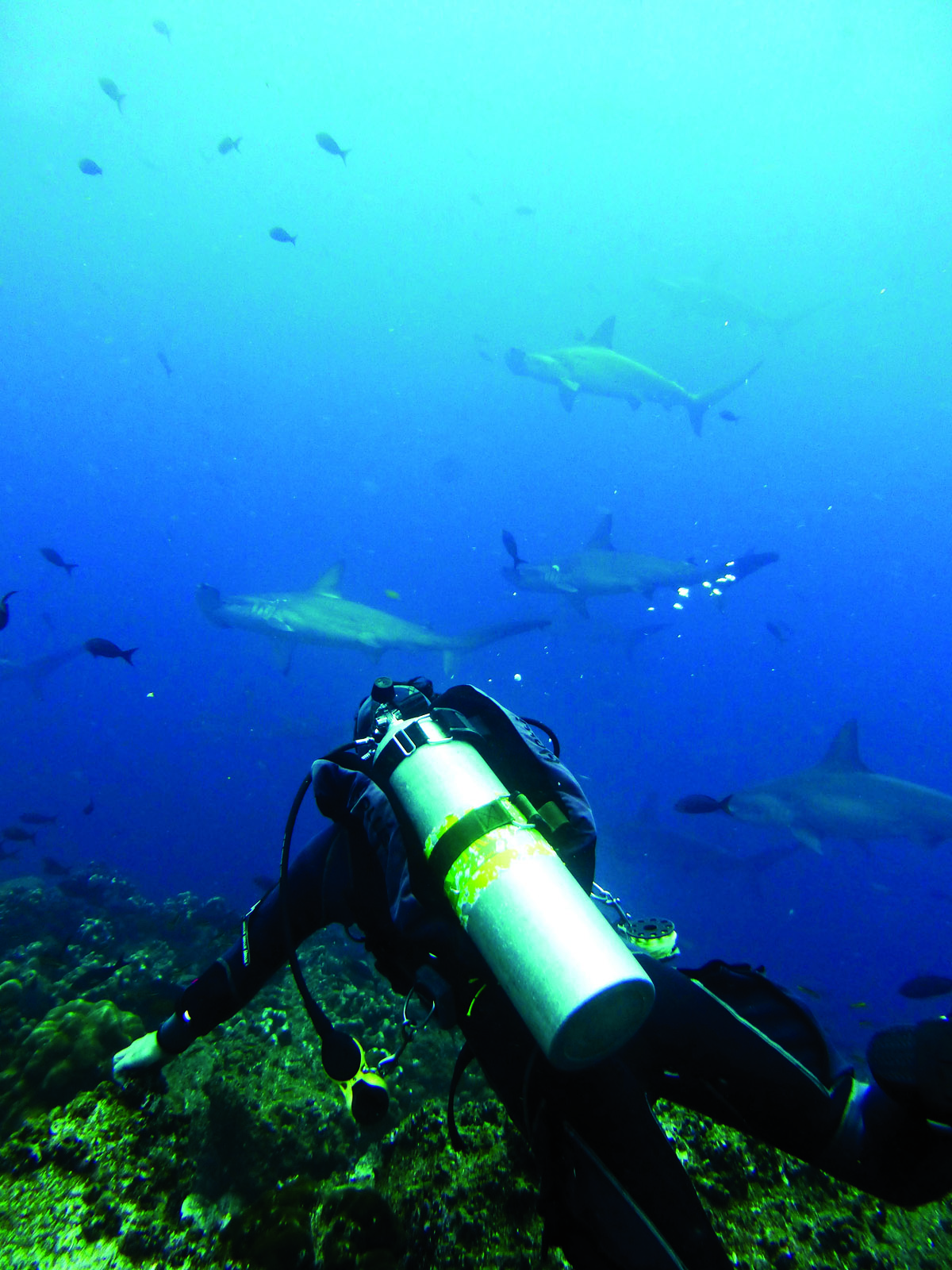
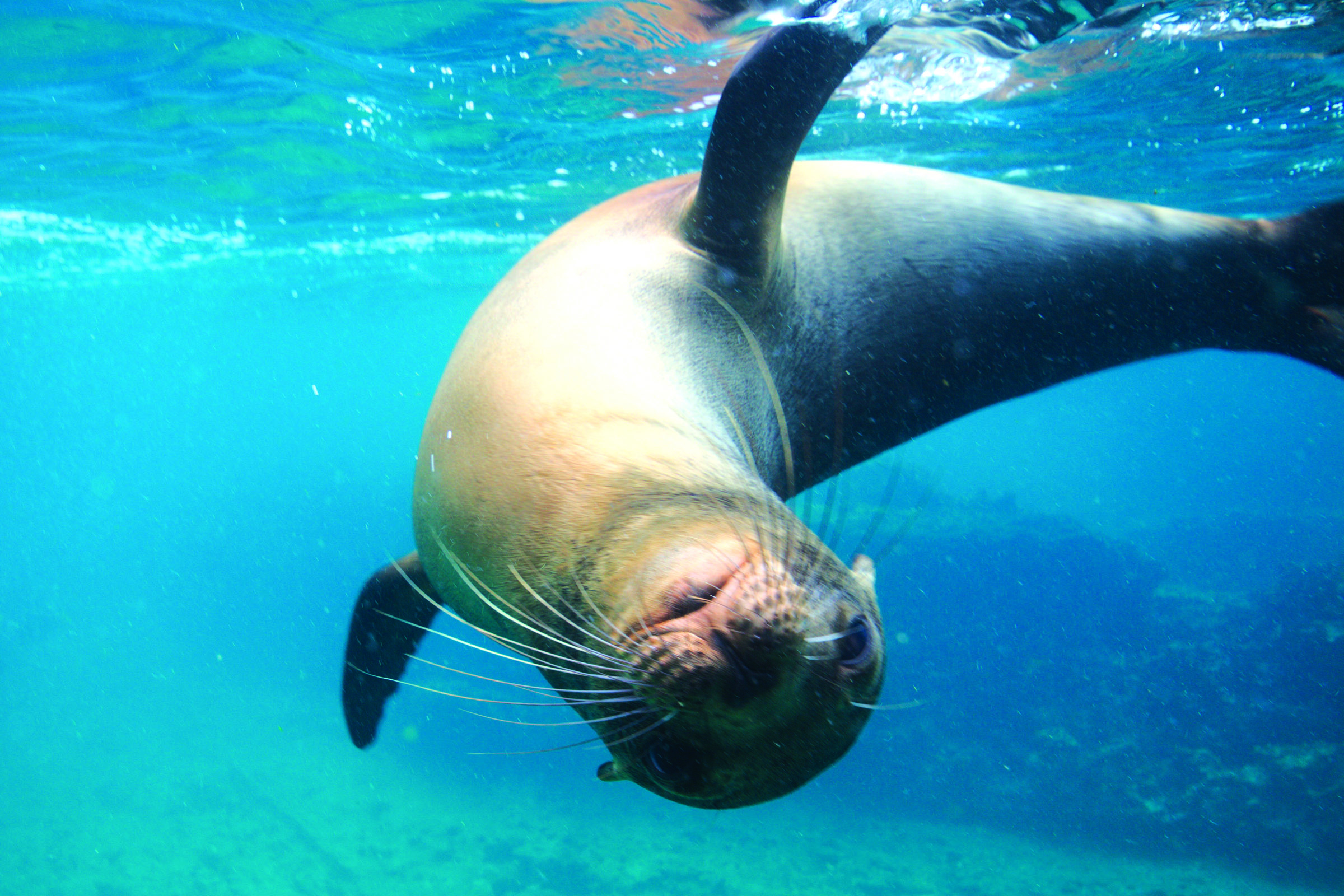
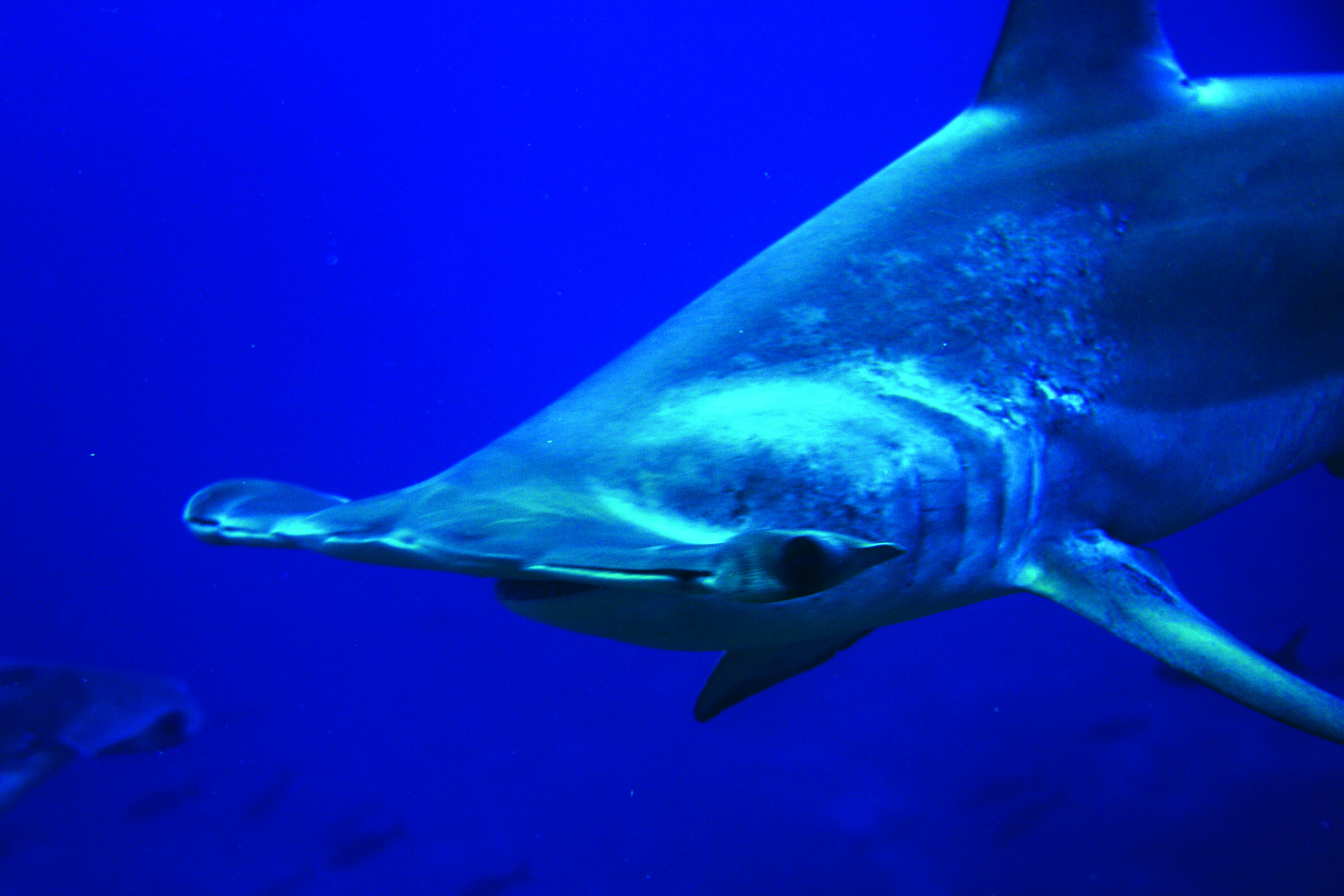

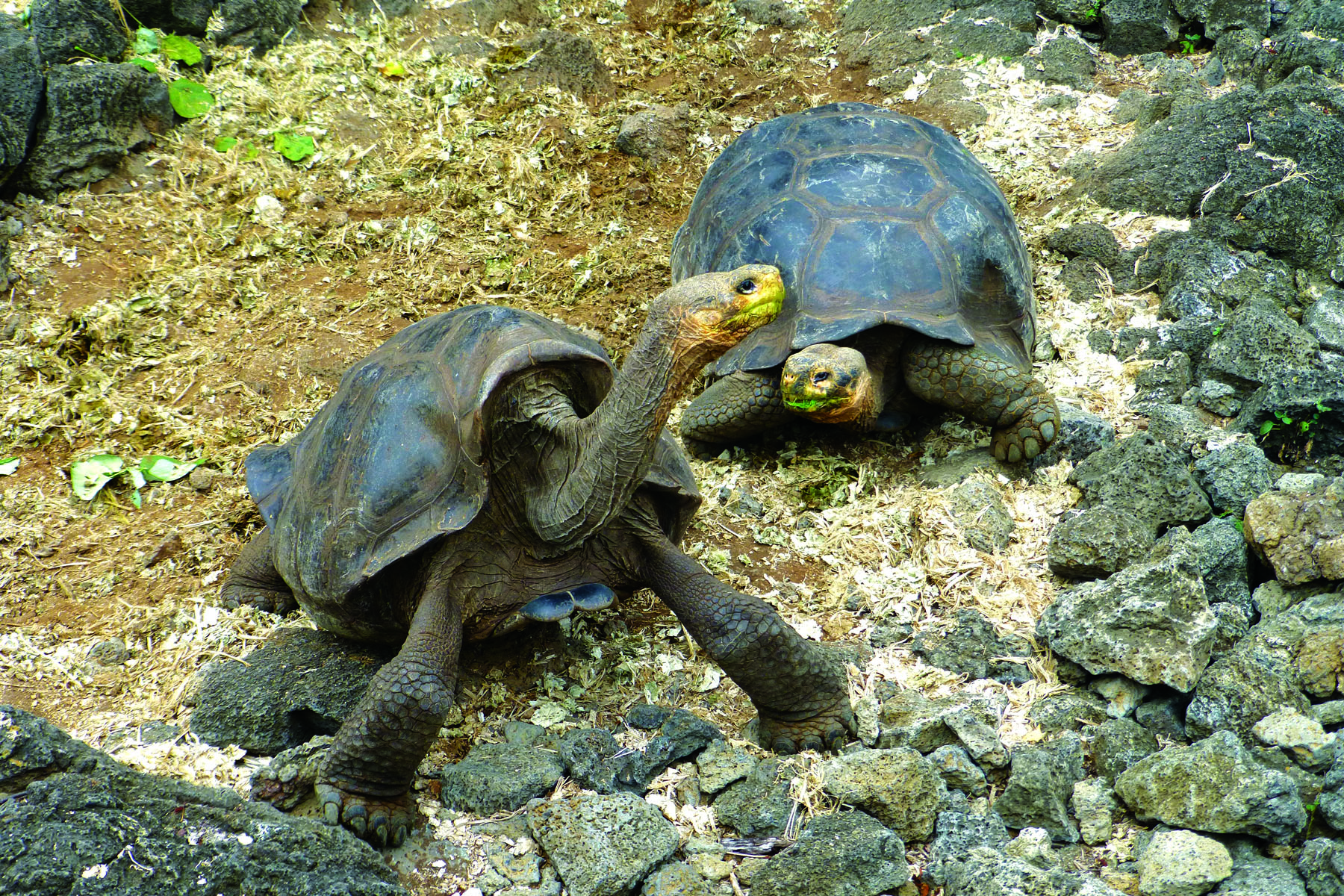
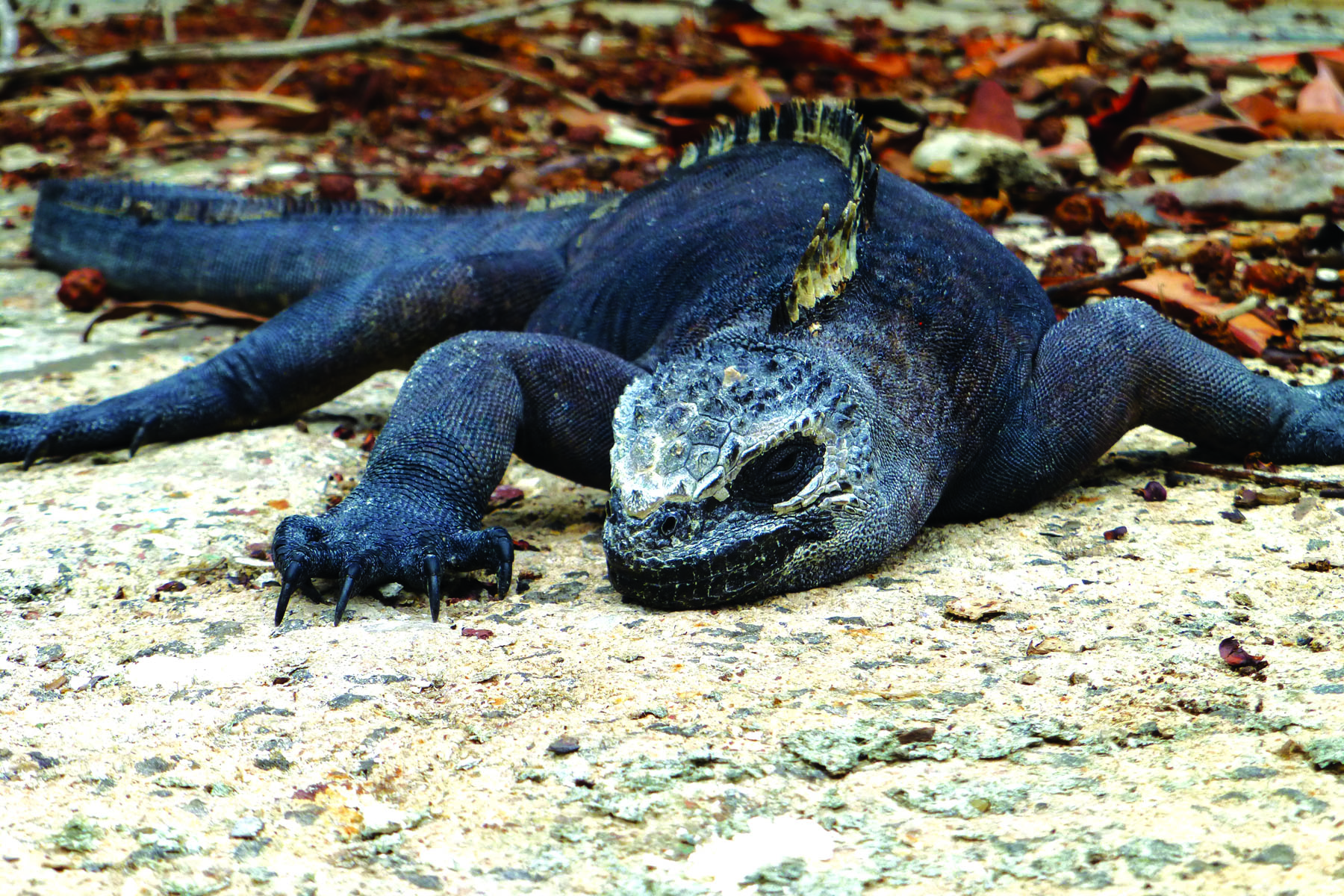
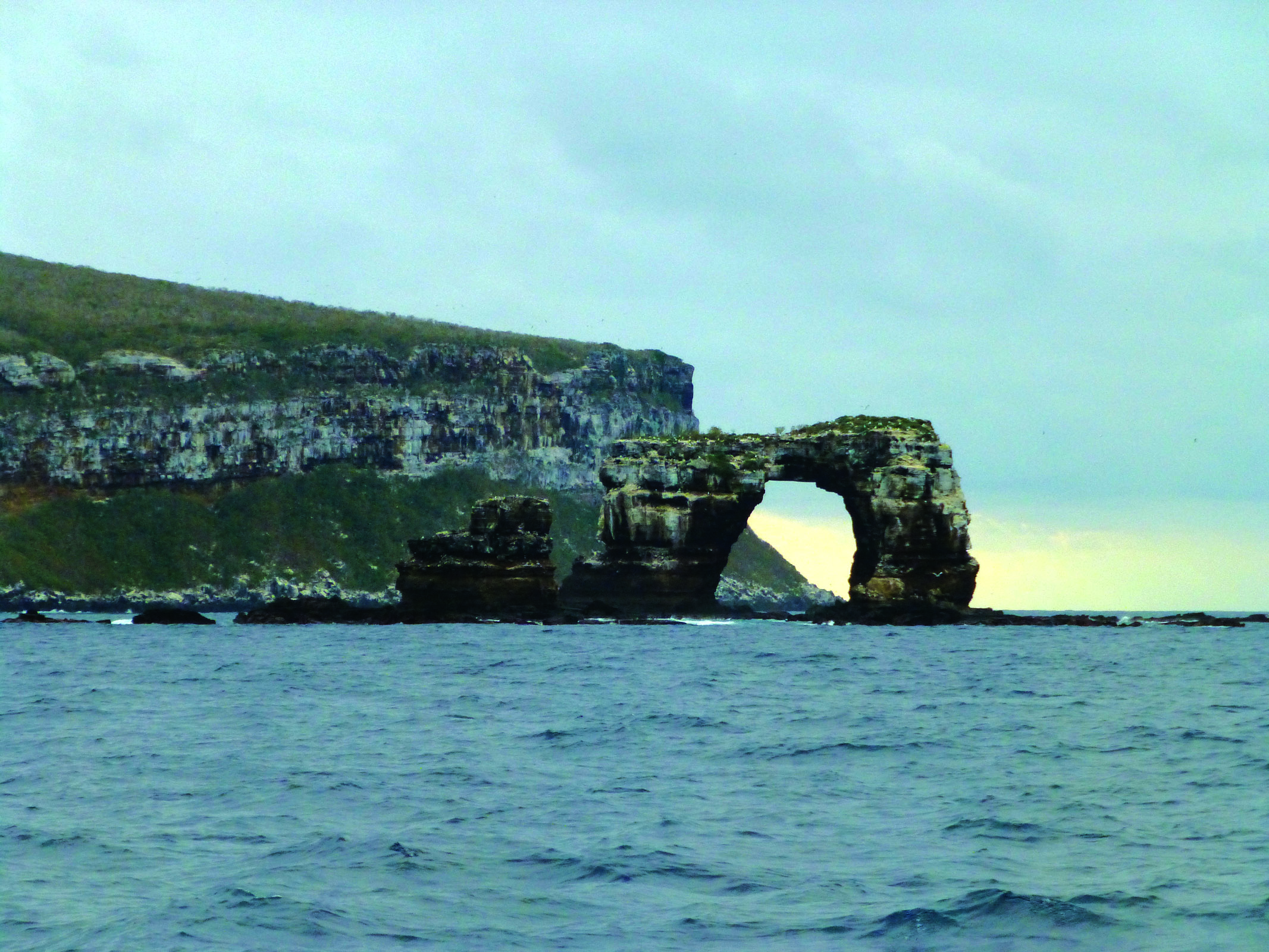
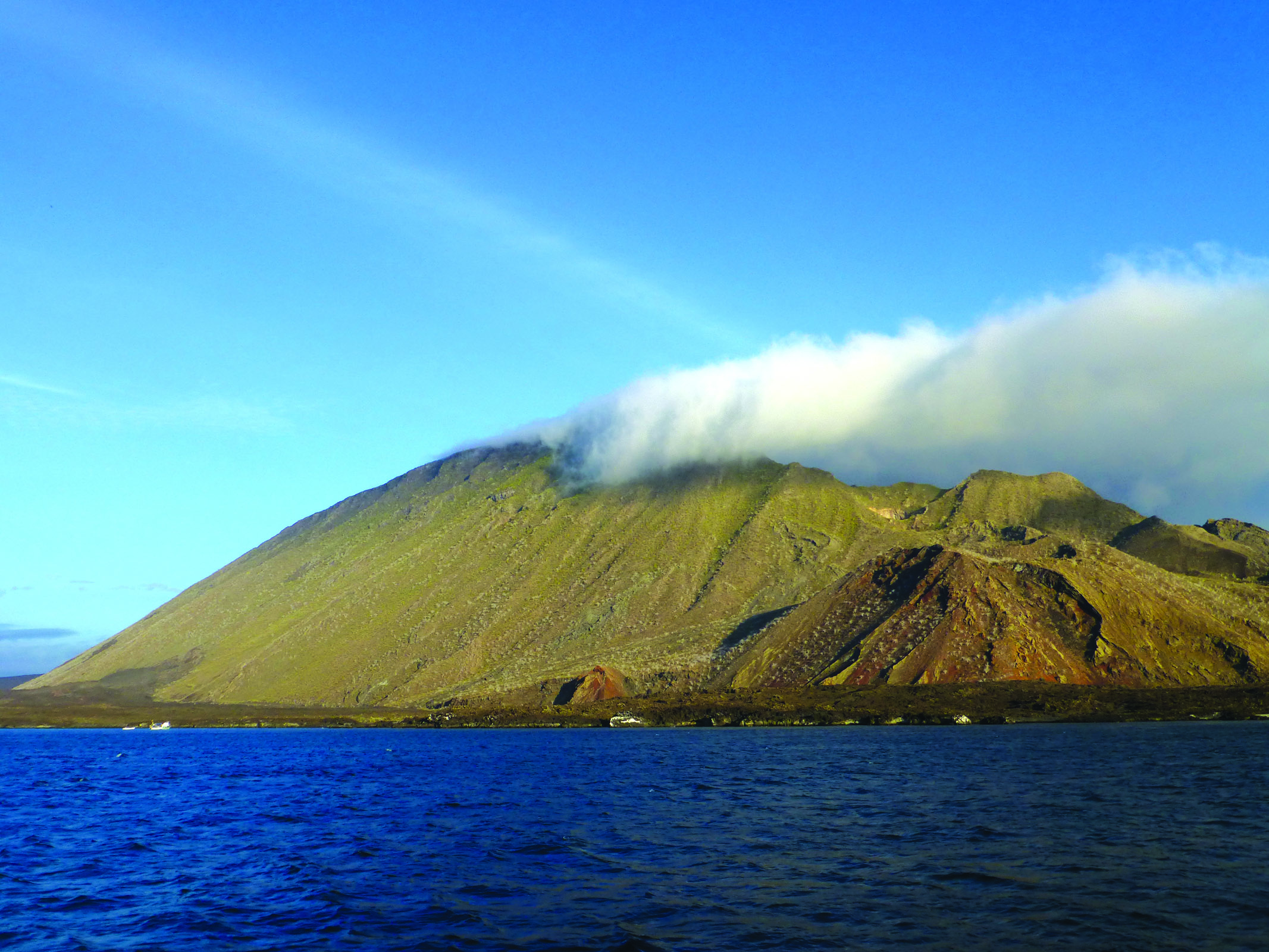
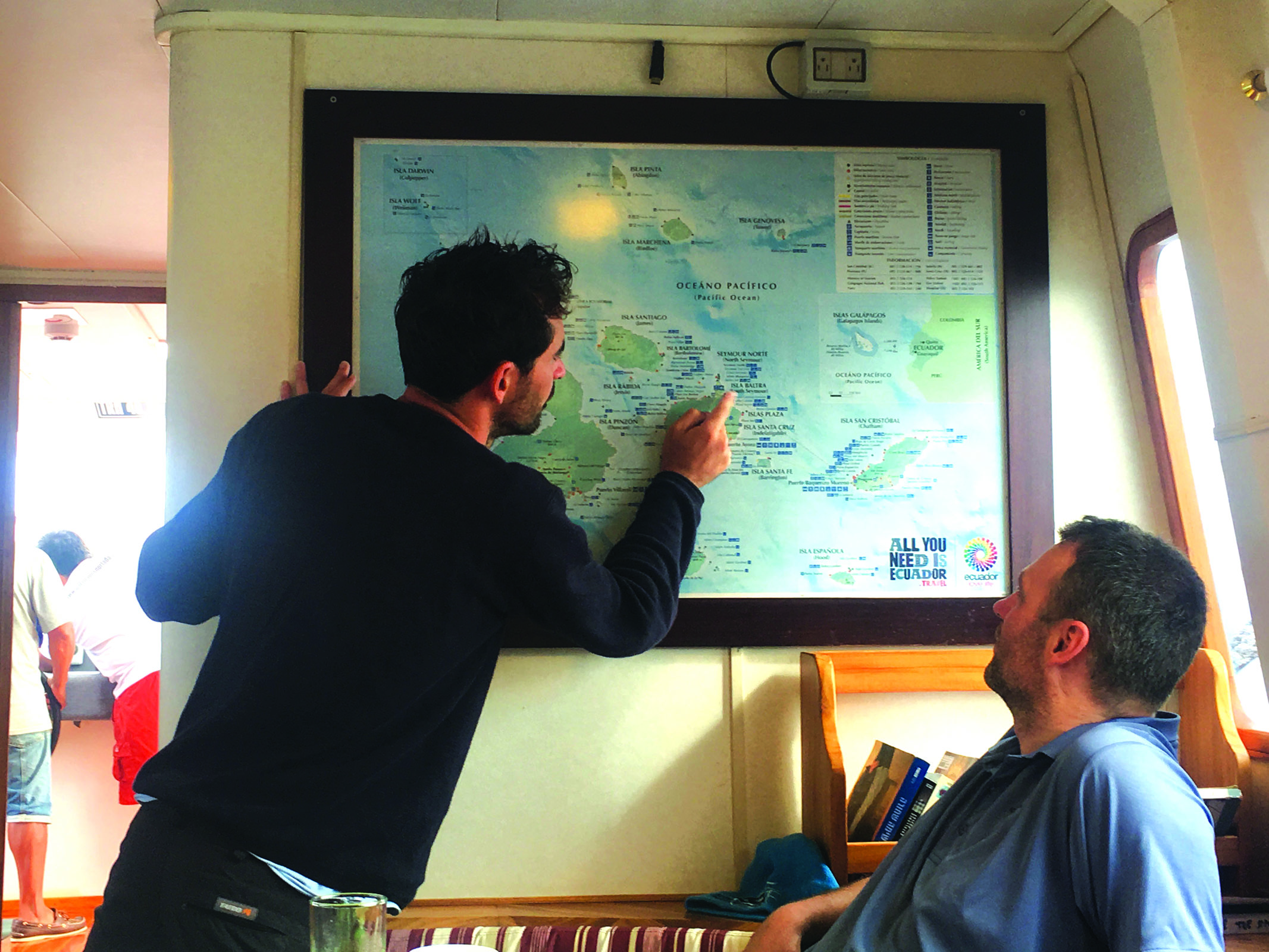
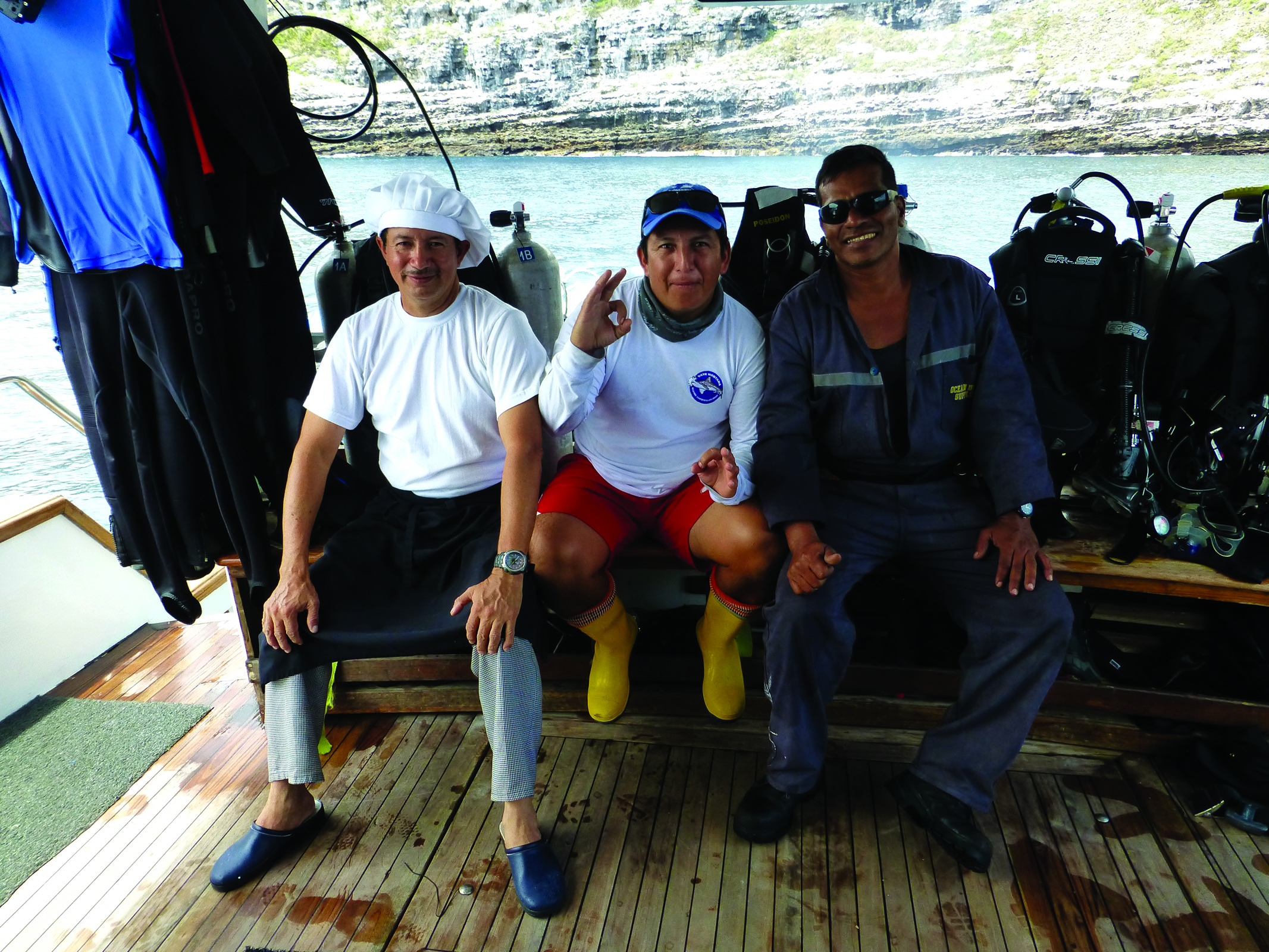

Image Credits: Cathy Anderson + Jeanette Zoetendal.
Before my heart rate had the chance to cool, I saw another hammerhead, and then another until it was a literal procession of hunters cruising by. They were joined by a crew of Galapagos sharks, which looked like regular reef sharks. Soon I realised the sharks were everywhere – in front, overhead, snaking up from the depths and covering our group’s flank.
Hammerheads are fascinating, exotic, even a little surreal. Their extraordinarily shaped head with tiny wide set eyes gives them an incredible visual range to spot prey, although it’s arguably at the expense of good looks. They’re easily spooked by air bubbles, so they kept a watchful distance – unlike some of the Galapagos sharks who weren’t afraid to come a little closer to give us a sniff.
Once the parade had passed, we began to ascend, drifting away from the reef and out into the big blue. We could see for about 20 metres in all directions. Five metres below the surface, we hung suspended, allowing potentially harmful nitrogen to expel from our bodies. My travel and dive buddies Carol, Garry and I were buzzing with adrenaline; we gestured to each other wildly with the universal ‘OK’ signal and just a tiny bit of underwater fist-pumping.
ENCORE
The follow-up show was just about to begin. From the shadows, several large shapes emerged. At first there was two or three, then 10, then 20 and that number multiplied until we had a collective epiphany – we were completely surrounded by circling sharks, easily 50 of them gliding in and out of visibility both above and below. Wowsers.
The idea of swimming with so many potentially ferocious predators should probably have been daunting, but we were overwhelmed with surprise, awe and euphoria.
The chance of being attacked in the Galapagos is very slim. Hammerheads have lovely sharp teeth, but are not prone to preying on humans. Even if they were, they would probably be too satiated to want to. The convergence of three major ocean currents makes the waters surrounding this ancient volcanic archipelago bountiful.
The warm Panama Current runs in from north, while the deep sea Cromwell current flows from the west. Both bring nutrient-rich waters, which rise to the surface when they hit the islands and attract incredible fish life. The Humboldt Current is an upswell of cooler water from the southern tip of South America which allows penguins to nest in the southern islands where the water temperature is as low as 12°C, compared to the northern islands’ 26°C.
For scuba divers, the Galapagos is a dream destination. The lure of ‘the big stuff’ with schools of sharks, sea lions, green turtles and the very elusive whale shark is difficult to resist. However, the tyranny of distance combined with the expense – add a few thousand for airfares and $7,000 for a week-long stay on a liveaboard – means it isn’t a cheap or very common getaway.
We had travelled nearly 40 hours to reach the main island of Santa Cruz, and another 20 motoring to Wolf Island on board our scuba diving liveaboard, the Nortada. The shark experience alone made that 60 hours worth it. Bucket list, tick.
A VISIT TO JURASSIC PARK
Beyond diving, the islands have a deeper and almost primal allure. They’re one of the most ecologically wondrous places on Earth; visiting the Galapagos is like taking a trip to a real-life Jurassic Park.
The island chain sits above a volcanic hotspot along the equator, and has formed over millions of years. There are 19 main islands and plenty of unnamed smaller ones, and only five are inhabited.
The northernmost islands of Darwin and Wolf are so remote they are skipped by daytrippers – it’s only scuba nuts who travel here. These magnificent volcanic outcrops are literally untouched by humans, their shapes honed by millenia of crunching seas and their sheer walls now the intimate home of endemic Galapagos birdlife, the red booby and Nazca booby.
Diving at Darwin Island, the remnants of an extinct volcano named after Charles Darwin that’s an hour or two from Wolf, was glorious. The seas here are rough, and have eroded a separate south-eastern section of the island to form a magnificent arch, hence the dive site’s name – Darwin’s Arch.
Approaching this lonely structure, as the rising sun turned the sky pink, felt like the dawn of time. Sharks, turtles, thousands of tropical fish and, potentially, whale sharks congregate here. It’s quite funny; we became so accustomed to schools of hammer-heads that after eight dives we were almost disappointed when we spotted one, wishing it was a whale shark instead. Sadly, these gentle giants were a no-show.
There’s a sense of isolation in this place that is both deep and beautiful, but also a tad unnerving. Other boats are rare, there’s no internet and it’s silent but for the squawk of the birds. This is true Middle Earth.
AN EVOLUTIONARY WONDER
Over millions of years, hundreds of species of plants, insects and animals have arrived in the Galapagos on the winds or on leaf rafts from mainlands. They’ve had to adapt to a harsh volcanic environment and their transformation is literally the stuff of legends.
Scientists cite the research carried out in the Galapagos by evolutionist Charles Darwin back in 1835 as the foundation for modern theories of evolution and natural selection.
This is David Attenborough territory, too. You’re constantly expecting the grey-haired naturalist to pop out from behind a rock and explain the geological origins of the island or the mating rituals of the local sea lions.
Attenborough’s three-part doco series on Galapagos is a must-watch before any adventure here. For us, the thrill of seeing animal life unique to the Galapagos was a huge drawcard, and the marine iguana, which features so heavily in Attenborough’s series, was at the top of the wish list.
This amazing creature has morphed from a jungle-dwelling leaf eater to a reptile capable of swimming in the ocean and holding its breath to dive down and feast on seaweed – the only constant source of nutrition in a very barren landscape. It has evolved to be able to expel harmful levels of excess salt from its nostrils and, in times of food shortage, it can also miraculously shrink its body to conserve energy.
Marine iguanas are such a speciality for visitors, but for locals they are a little ‘meh’. Iguanas lounge about on the footpaths in Puerto Ayora, a town on the island of Santa Cruz, and even on the airport tarmac, blissfully unaware of their extraordinary existence.
We dived with them in the shallows off the island of Fernandina. Anyone who has seen the Alien franchise will have some idea of the impression they give. Although not as large as the sci-fi monsters, being only 30-40cm in length, they swim with their scaly black heads above water and steer with their powerful tail, until they decide to duck underwater and search for tasty green crops of weed.
Marine iguanas are pretty casual creatures, but they sure can flee the scene quickly when large human beasts with imposing shadows and noisy bubbles get too close with a camera. Once you’ve given them a spook, there’s no catching up – but the thrill of spotting a creature so strange and geographically rare was pretty incredible.
LIVEABOARD LIFE
Most traffic in the Galapagos comes and goes from the islands of San Cristobal and Santa Cruz. They are the only islands with airports, and the bustling ports of Puerto Baquerizo Moreno in the former and Puerto Ayora in the latter act as the main departure points for the myriad of Galapagos boat cruises. Outbound vessels range from 100 person cruise ships to more private vessels of only eight passengers, like ours.
Galapagos Marine Reserve rules dictate that land-based tours cannot offer scuba diving, and scuba-based tour vessels are not permitted to land on any islands – which means many who travel here do two tours back-to-back.
Living on board a specialist scuba diving boat is a hell of a lot of fun – as long as you pack your seasickness pills. The trip to Wolf and Darwin islands contains long stretches of rough seas and the smaller the boat, the more you get tossed around.
Along on the adventure were three Australians, a Dutch couple, two Venezuelan girls and a German guy – our quarters small but comfortable twin compartments. The Nortada was at capacity with its eight passengers and a crew of just as many: a captain; chef; mechanic; hospitality manager who delivered three buffet-style meals a day and made your bed; first and second mates who filled up our tanks after each dive and escorted the divers in rubber dinghies, known as ‘pangas’, from the mothership to the dive site; and two divemasters who led our groups for each dive.
Spanish is the language du jour, yet you can always rely on the universality of sign language, especially when you’re feeling queasy – a demonstration of pretend vomiting was enough to inspire Pedro the chef to whip up his anti-nausea brew of lemon and orange juice infused with ginger and cinnamon.
Our eight-day adventure included two nights at Wolf and Darwin islands and a meander back to Santa Cruz. Depending on the daily schedule and travel times, we averaged three to five dives each day. We started with a wake-up call at 5am followed by a briefing, and were in the water by 6am. Then it was rinse and repeat for the day, punctuated by snacks, lectures on endemic fish species and naps in the sun.
Diving, particularly from a dinghy, can be hard work. Scrambling into it kitted out with suits, weight belt, tanks and cameras is tricky because the sides are slippery and the boat unstable. The ride to each dive site was bumpy, and the wind and water whip at your face. Climbing back up at the end of each dive after battling Galapagos’ notorious currents was a particular brand of gracelessness – it was all bums in the air and sliding into the boat face first. And when you’re not spending hours in your wetsuit, you’re scraping the skin off your pruney fingers by dragging it on and off.
Exhausting? A little. Did we miss a single dive? Not a chance.
Because of the nature of the currents, each island offers its own unique contribution to the Galapagos ecosystem. Fernandina was the hotspot for marine iguanas; in Roca Blanca to the east of Isabela Island we spent an hour or two with playful sea lions; on the northern tip of Isabela Island we spotted an elusive sunfish, or mola mola.
But it wasn’t just underwater delights. We had a close encounter with giant manta rays on the surface, a huge school of giant imperial frigate birds caught a ride out of Santa Cruz and a pod of pilot whales cruised past one evening.
LAND LUBBERS
The Galapagos offers unique opportunities to get up close and personal with incredible land-based animals too. Not least of which is the giant tortoise.
The free-entry Charles Darwin Research Station on Santa Cruz has an amazing captive breeding program where you can see giant tortoises aged one to 100. Watching two giant tortoises fight – the winner is the one who can stretch their neck the highest – is like watching a magic sporting moment in slow-mo replay.
You can even visit the legendary Pinta tortoise Lonesome George, whose breed was once regarded as the rarest in the world. He passed away in 2012 aged around 102 and his species is now extinct. As a tribute, the centre exhibits his taxidermied body.
Isabela is the largest island with five active volcanoes, and offers adventure lovers great hiking trails to craters such as Volcan Alcedo and Volcan Darwin. Visitors can snorkel in the cool lava formations at Los Tuneles and watch for manta rays.
Floreana Island’s Green Beach is a photographer’s dream too. It really is green, thanks to olivine crystals in the sand.
The Devil’s Crown, a volcanic crater with a coral reef in the middle, is a top snorkeling site that attracts sharks, stingrays, sea lions and plenty of tropical fish.
Our eight day adventure in the Galapagos was barely long enough. The wildlife, the islands and the reefs were so different from anything I’d experienced before I wished we could stay for longer. There was still so much left to discover. Yet eight days was enough time to get an unforgettable taste of this remote, untouched and environmentally staggering part of the world.





